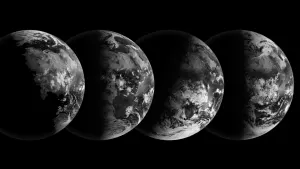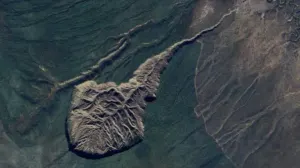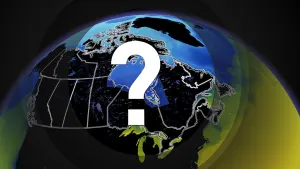
Earth will soon pick up a new 'mini-moon' but it won't be here for long
A recently discovered asteroid will soon become a quasi-satellite of Earth as it loops around our planet over the next two months.
Earth will soon have a new moon — a mini-moon to be exact — as a small asteroid performs a loop around our planet over the next few months.
Back in early August, the Asteroid Terrestrial-impact Last Alert System (ATLAS) discovered a new near-Earth asteroid. Now named 2024 PT5, this roughly 10 metre–wide space rock is harmless to us, with its closest approach expected to be roughly twice the distance to the Moon.
From initial observations, it appeared as though this asteroid would be flying along with us as a companion of sorts, from late September through late November, as Earth orbited around the Sun.
However, two researchers from the Complutense University of Madrid took a closer look at 2024 PT5 and discovered something remarkable. The asteroid isn't going to just fly alongside us. Instead, from our perspective here on Earth, it will appear to perform a full loop around our planet before it departs.
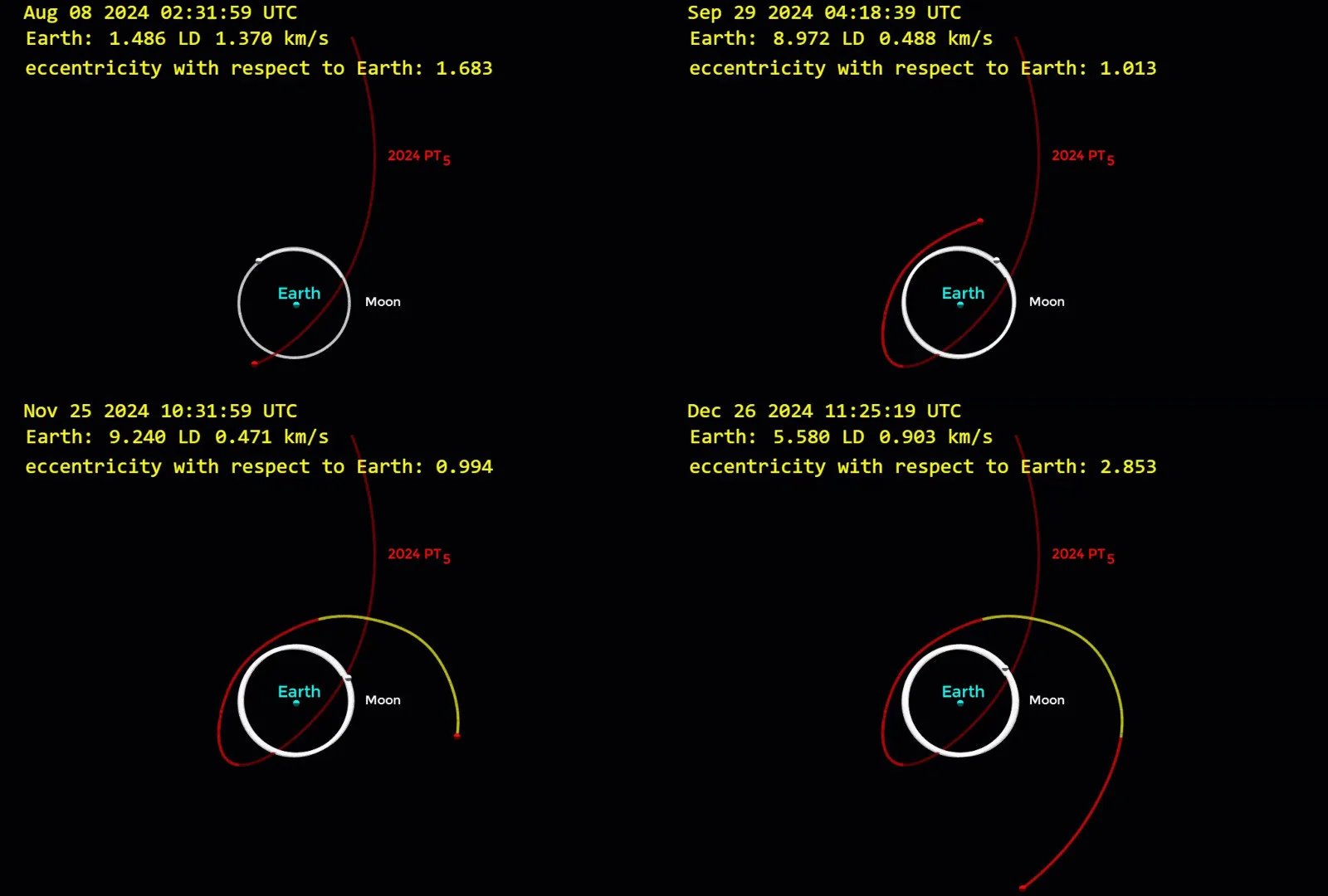
A simulation of 2024 PT5's orbit shows how it performs a slow loop around Earth from August through December 2024. The yellow portion of the asteroid's loop indicates when it will be close enough to be considered a mini-moon or quasi-satellite of Earth. (Tony Dunn)
There are plenty of near-Earth asteroids that come reasonably close to us as they travel through space. A small number whiz by closer than the Moon, and a few rare ones come close enough to fly inside the ring of geostationary satellites that orbit Earth. Even rarer examples manage to intercept us, plunging into the atmosphere to produce bright fireballs that light up the night sky.
READ MORE: Small asteroid burns up over Philippines just hours after being spotted in space
The rarest asteroid interactions, though, are when one becomes a quasi-satellite, also known as a mini-moon.
Asteroids that swing by our planet close enough will feel the pull of Earth's gravity. In most cases, that pull causes a slight deviation in the asteroid's path through space. That can widen or shorten the space rock's orbit around the Sun. In some cases, like asteroid Apophis, these deviations can raise alarm bells for future encounters.
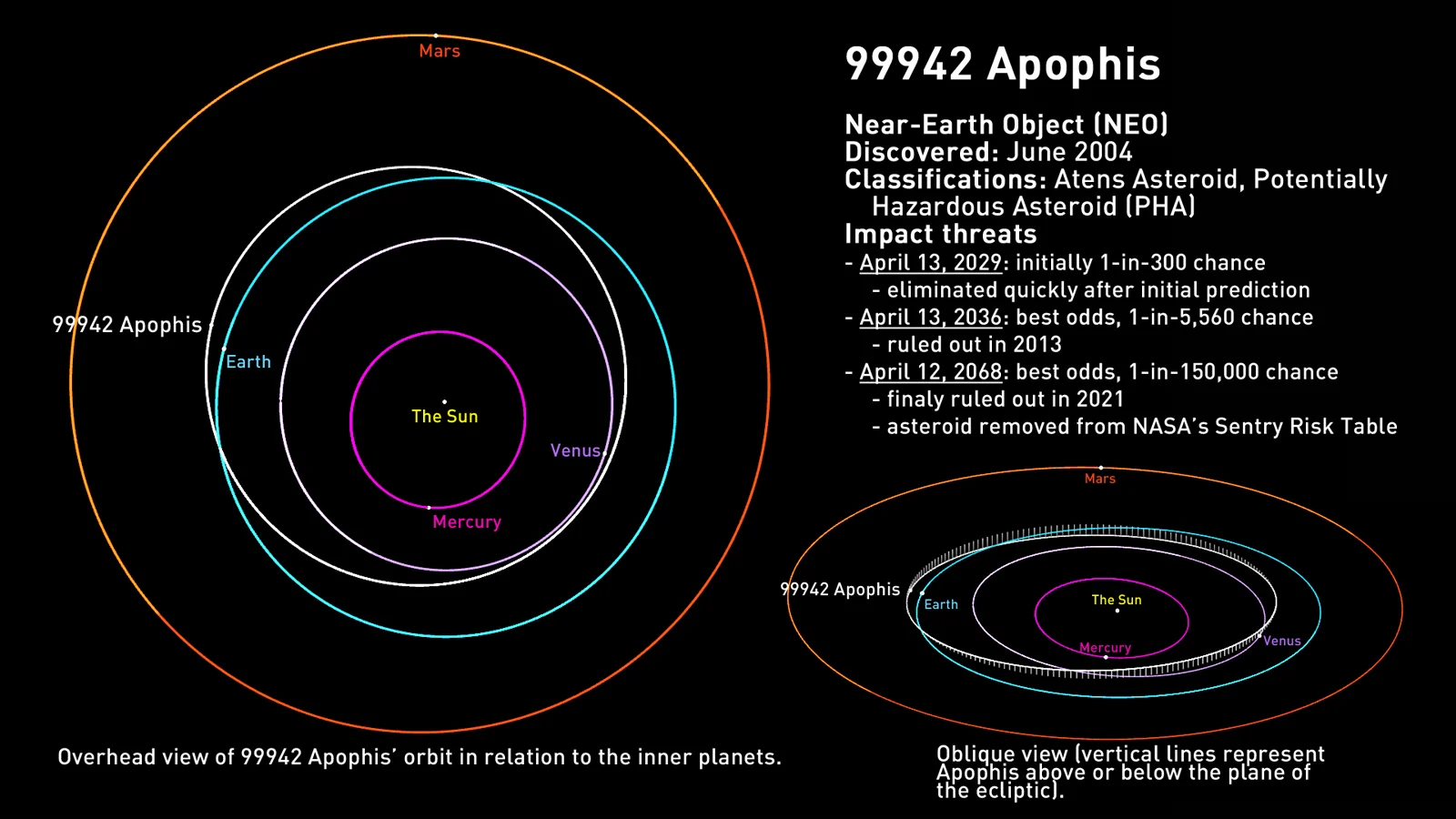
Asteroid Apophis has given astronomers a few scares over the years. (NASA/JPL-Caltech/Scott Sutherland)
In a few unusual cases, though, the asteroid and Earth enter an odd sort of relationship, where their orbits synch up for a short time. The shapes of their orbits might be very different from one another, but the timing matches up so that they appear to travel along with each other, similar to how the Moon travels around the Sun with Earth.
The big difference between this Earth-asteroid relationship compared to the Earth-Moon is that the asteroid is far enough away that Earth's gravity cannot permanently capture it as a true satellite. Instead, the asteroid remains nearby for only a short period of time. That is why it is only referred to as a quasi-satellite (with 'quasi' meaning "apparently but not really").
So, this is the situation that Carlos de la Fuente Marcos and Raúl de la Fuente Marcos, from the Complutense University of Madrid, discovered for 2024 PT5.
The asteroid has been fairly close to Earth for over a month now, having made its nearest approach to us on August 8. However, according to their new research paper, 2024 PT5's orbit appears to synch up with Earth's orbit from September 29 through November 25.
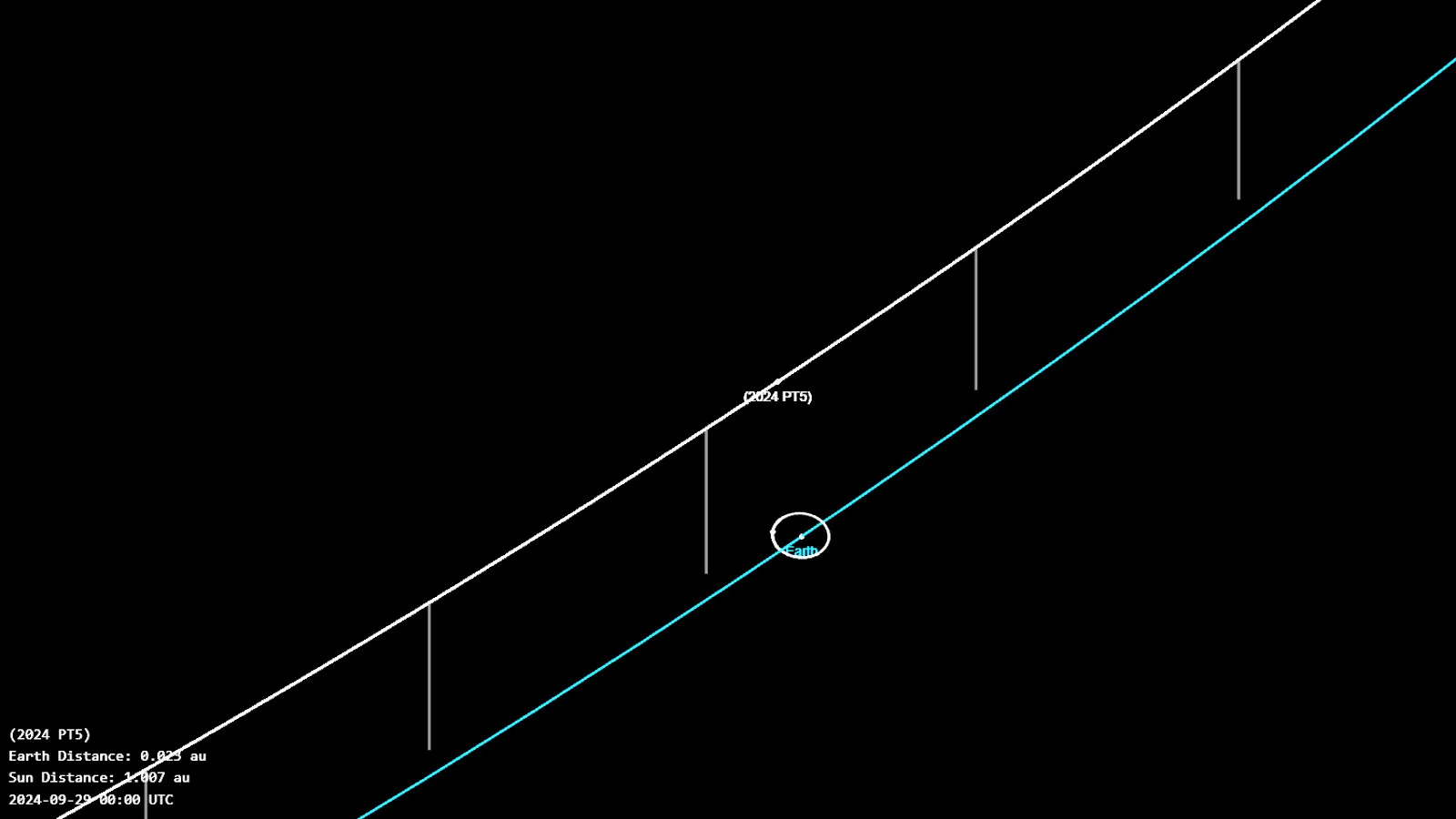
A NASA simulation shows the orbit of asteroid 2024 PT5 skimming just inside Earth's orbit around the Sun on September 29, 2024. The asteroid is far enough away to be harmless, but close enough to be considered a mini-moon of Earth at that time. (NASA CNEOS)
READ MORE: Could a collision cause asteroid Apophis to hit Earth? New study says no
Artificial object?
Given the somewhat unusual path that 2024 PT5 is on right now — flying alongside our planet and doing a full loop over the next two months — it's worth exploring the idea of whether this could be some kind of artificial object.
We saw just this kind of scenario back in early 2022. An object was discovered, which was originally thought to be an asteroid of some kind. Further investigation found that it was a spent rocket booster, possibly from China's launch of a test flight for their lunar sample return mission, which blasted off in October 2014. That rocket booster went on to slam into the far side of the Moon, producing a double crater upon impact.
However, de la Fuente Marcos and de la Fuente Marcos state in their paper: "The object is unlikely to be artificial as its short-term dynamical evolution closely resembles that of 2022 NX1, a confirmed natural object."
2022 NX1 is another small near-Earth asteroid that was temporarily captured as a mini-moon by Earth's gravity from June 11 to 3 July, 2022.
At the time, astronomers suspected it might have been an artificial object, such as a defunct satellite. Telescope observations confirmed that it was just a natural space rock passing by.
Not a final goodbye
Although this new mini-moon of Earth will only be around for a short time, we haven't seen the last of it.
After it breaks away from Earth's gravity in late November, it appears as though 2024 PT5 will swing past us again in January 2025, specifically from the 9th through the 12th.
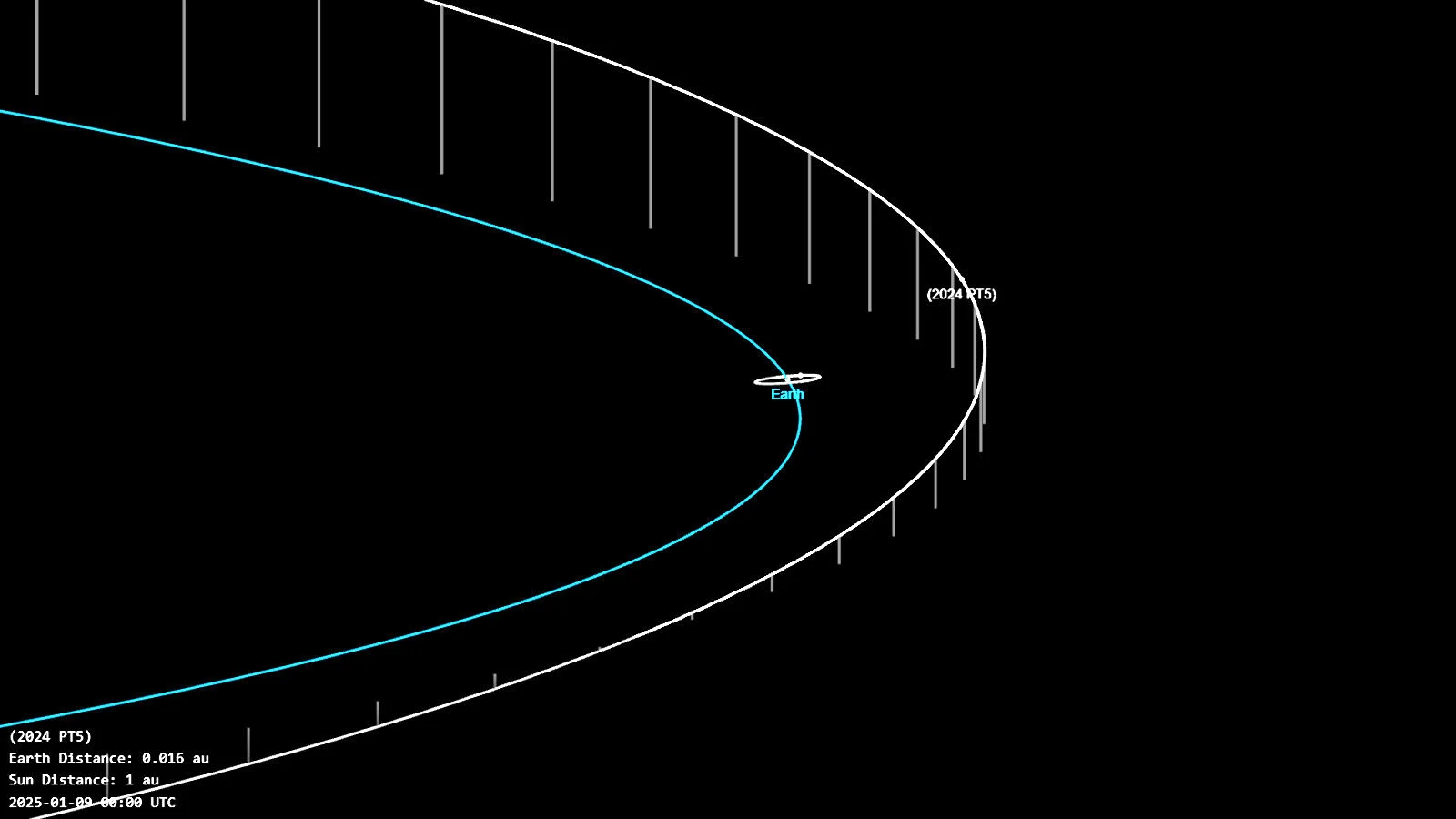
2024 PT5's 'close encounter' with Earth on January 9, 2025, when it will be around 1.8 million kilometres away, or over 4.5 times farther away than the Moon. (NASA CNEOS)
The asteroid will be more than three times farther away from Earth, compared to its flyby from September through November. So, it's unlikely to be picked up as a quasi-satellite again at that time.








